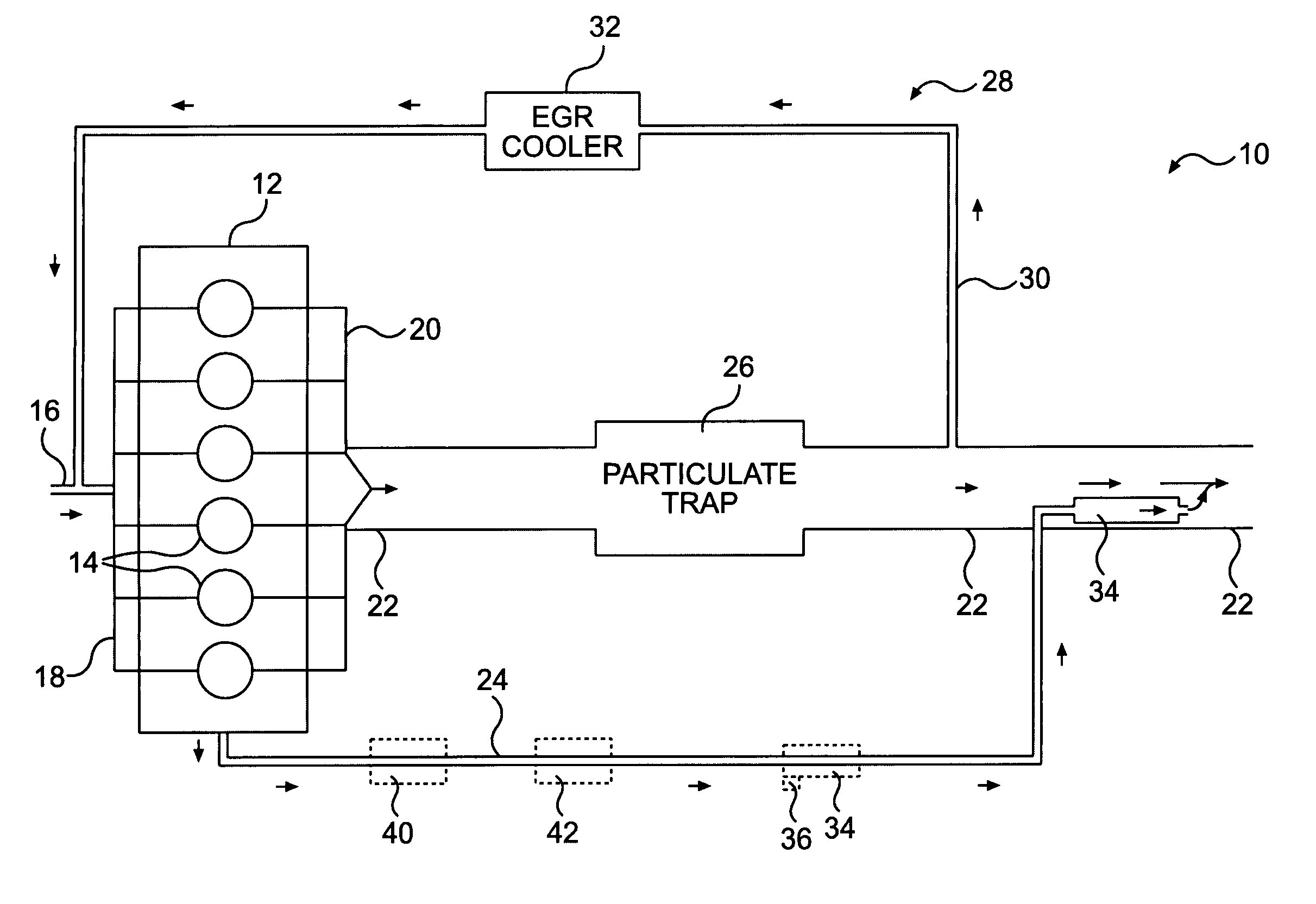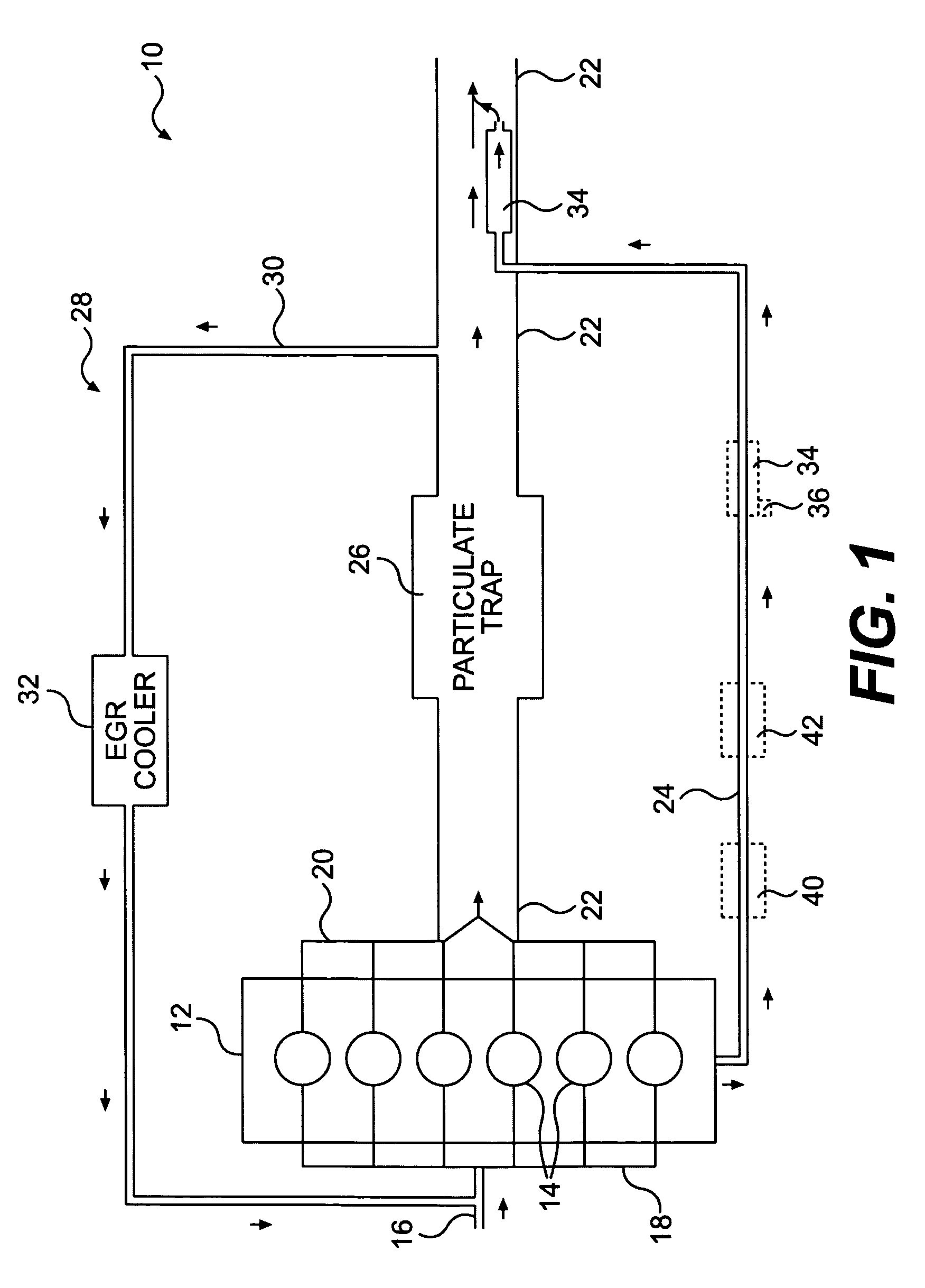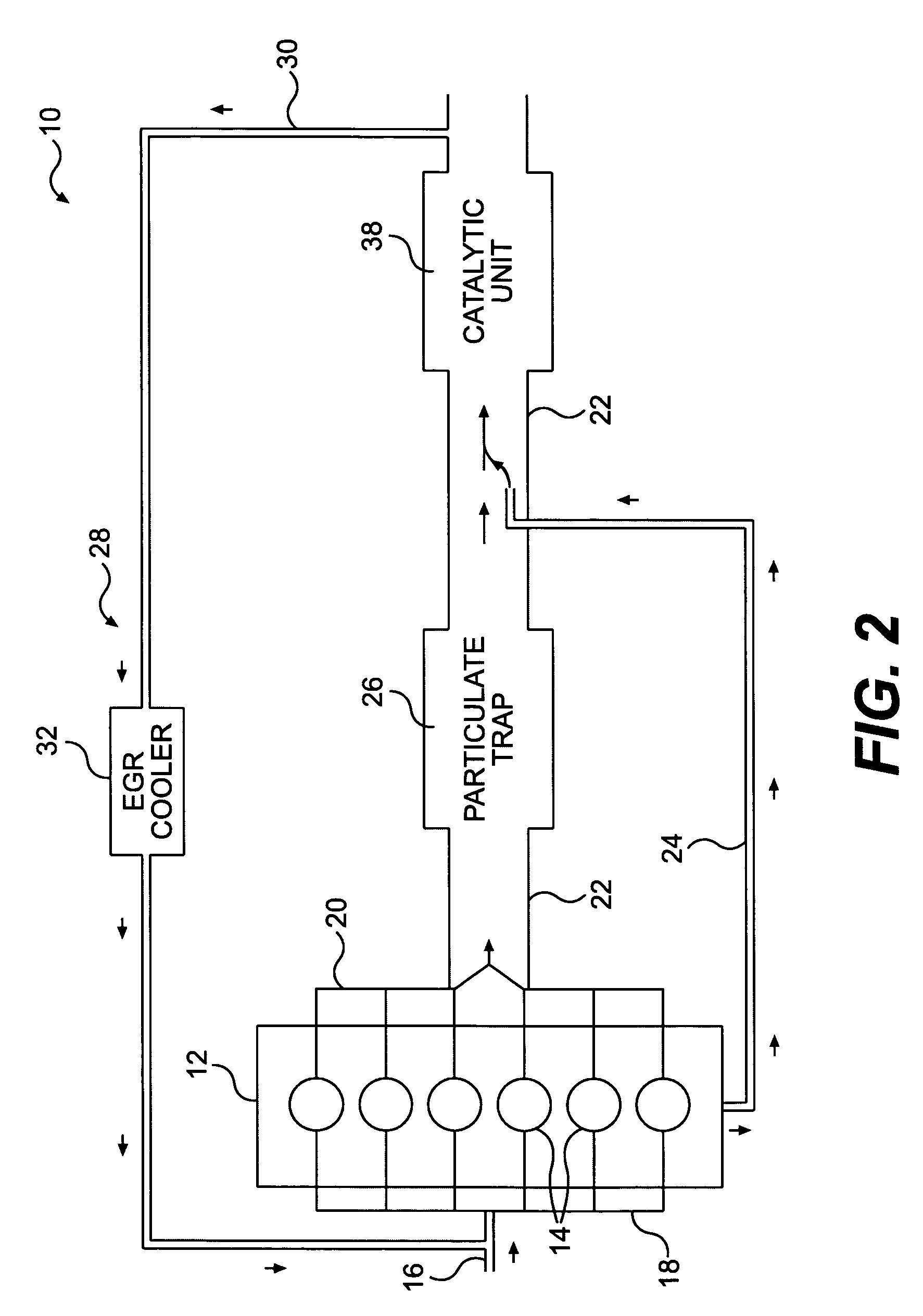Crankcase ventilation system
a ventilation system and crankcase technology, applied in the direction of machines/engines, mechanical equipment, non-fuel substance addition to fuel, etc., can solve the problems of blow-by gas contaminant harmful to the environment, poor choice of direct atmospheric ventilation, and short time-consuming to clean up
- Summary
- Abstract
- Description
- Claims
- Application Information
AI Technical Summary
Benefits of technology
Problems solved by technology
Method used
Image
Examples
Embodiment Construction
[0014] Reference will now be made in detail to the drawings. Wherever possible, the same reference numbers will be used throughout the drawings to refer to the same or like parts.
[0015]FIG. 1 illustrates an exemplary crankcase ventilation (CCV) system 10. CCV system 10 may include an internal combustion engine 12. Engine 12 may include combustion cylinders 14, and may have intake and exhaust components attached to it, such as, for example, an air intake 16, an intake manifold 18, an exhaust manifold 20, a main exhaust conduit 22, and a CCV conduit 24.
[0016] Engine 12 may be any kind of internal combustion engine. For example, engine 12 may be a gasoline engine or a diesel engine. Further, engine 12 may be naturally aspirated or may include forced induction such as turbocharging or supercharging.
[0017] CCV system 10 may include one or more exhaust treatment devices for reducing emissions in the exhaust gas from engine 12. In particular, CCV system 10 may include a particulate trap...
PUM
 Login to View More
Login to View More Abstract
Description
Claims
Application Information
 Login to View More
Login to View More - R&D
- Intellectual Property
- Life Sciences
- Materials
- Tech Scout
- Unparalleled Data Quality
- Higher Quality Content
- 60% Fewer Hallucinations
Browse by: Latest US Patents, China's latest patents, Technical Efficacy Thesaurus, Application Domain, Technology Topic, Popular Technical Reports.
© 2025 PatSnap. All rights reserved.Legal|Privacy policy|Modern Slavery Act Transparency Statement|Sitemap|About US| Contact US: help@patsnap.com



